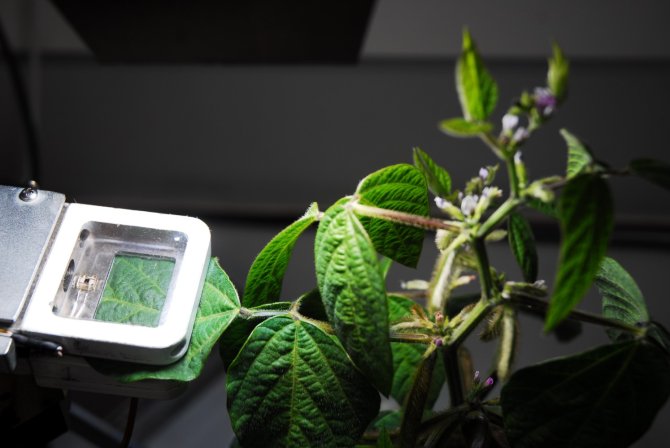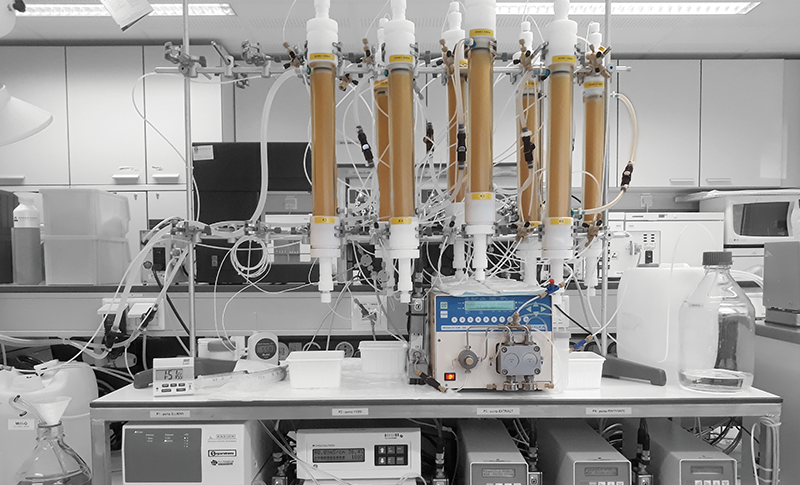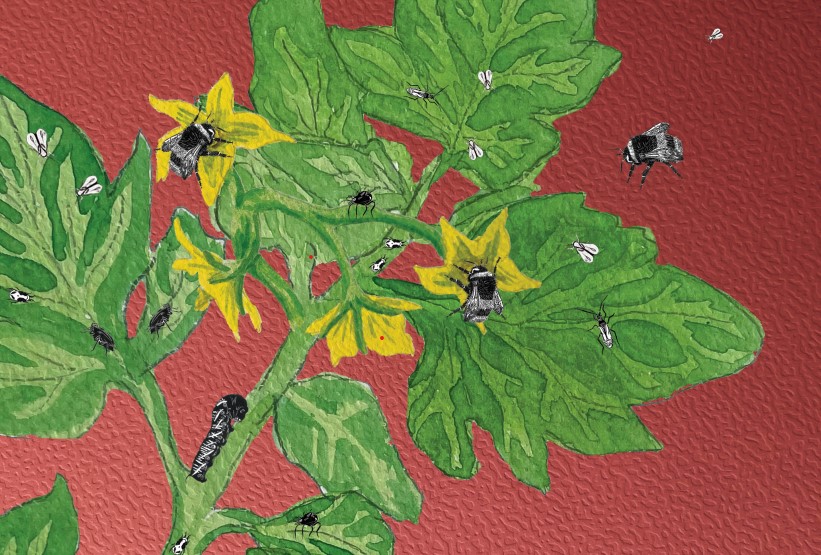It is difficult to tell from a look on the outside how ripe fruit is, how much sugar an apple contains, how much dry material is in a banana or how firm a mango is. Infrared can, without touching the fruit, never mind slicing it open. Puneet Mishra and his colleagues have developed a device that can do this rapidly and efficiently.
Wageningen scientists conduct a lot of research commissioned by the Ministry of Agriculture, Nature and Food Quality (LNV). Some of this research was shown during the Digital Innovations Expo in Impulse on the afternoon of Wednesday, 25 October. The focus was on new applications for sensor networks, satellite data, digital twins and artificial intelligence.
Infrared
The all-in-one Spectral Cabinet designed by Mishra was an attention grabber. The device, the size of a large cupboard, scans fruit for properties that are relevant to the chain, such as sugar content, the amount of hard substances and firmness. To this end, the fruit is scanned using two infrared cameras. The data thus obtained are then processed into graphs by a computer.
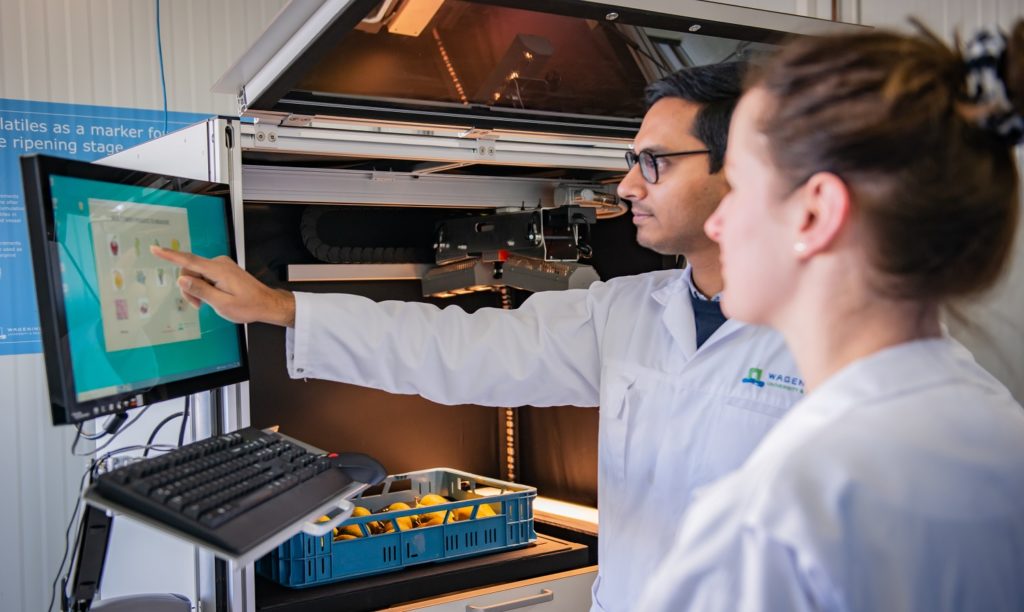
‘Parameters such as these are measured throughout the supply chain’, Mishra clarifies. Fruit is picked when it is not fully ripe, as it must be transported and processed. Measurements are taken by slicing open a sample of the fruit, where one or more pieces serve to represent the whole batch. That piece of fruit is lost.’
Analysing fruit using infrared is not a new phenomenon. Hand-held scanners are available for this purpose. Infrared light enters the fruit to about 5 to 10 millimetres below the skin. The information obtained can be used to deduce the desired parameters. Basically, the Spectral Cabinet does the same thing, but at a larger scale, Mishra says while he demonstrates the device.
That enables you to scan and pick rapidly without damaging the fruit
Puneet Mishra, Food and Biobased Research, Post Harvest Technology
The cameras scan a box of apples for a few seconds. The computer screen almost instantly provides a concise overview of the apples. Not just of one apple but of each individual apple in the box. How much the individual apples differ becomes immediately apparent. As does the margin of error if you take one apple to represent the whole batch.
Robotic arm
The cabinet is just a demo, but it is easy to think of various applications. Do you want all your apples to be equally sweet? Deploy a robotic arm that picks precisely the right apples, Mishra says. ‘That enables you to scan and pick rapidly without damaging the fruit.’

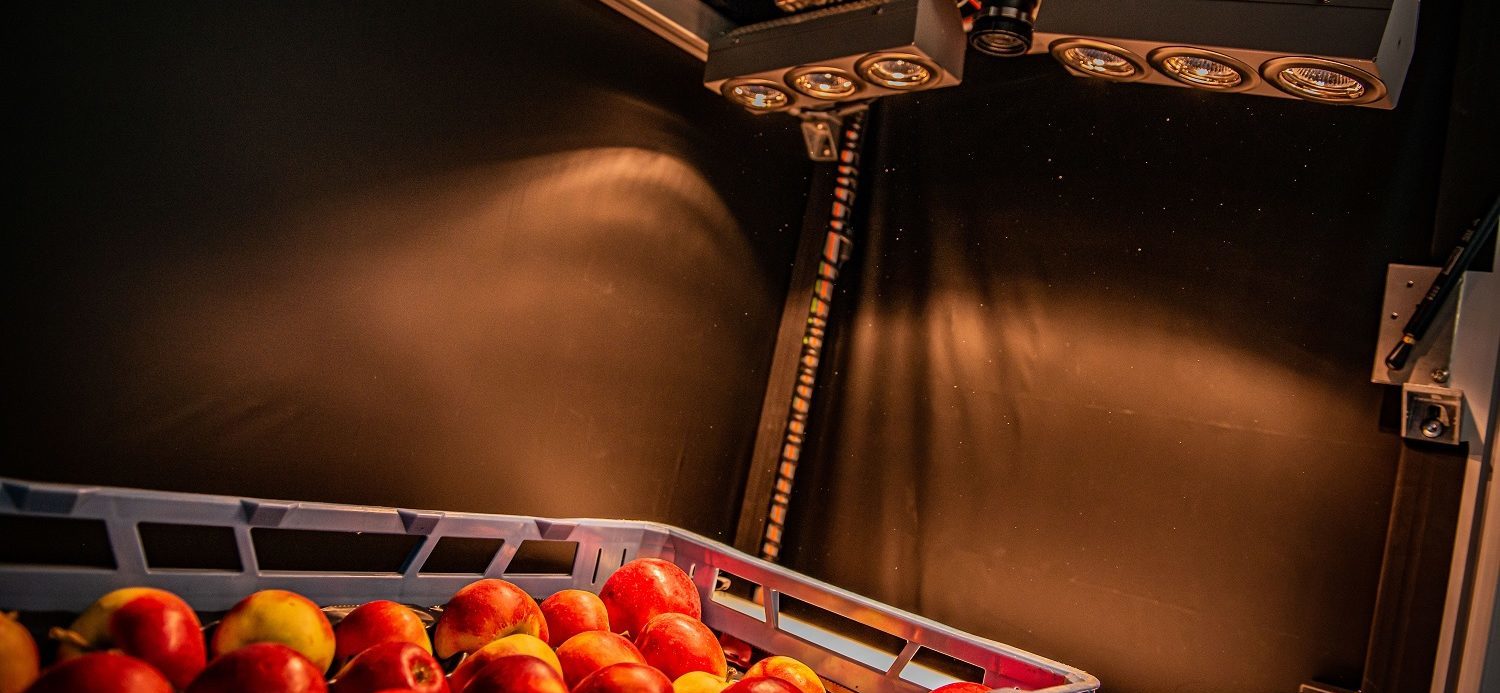 Photo WUR
Photo WUR 